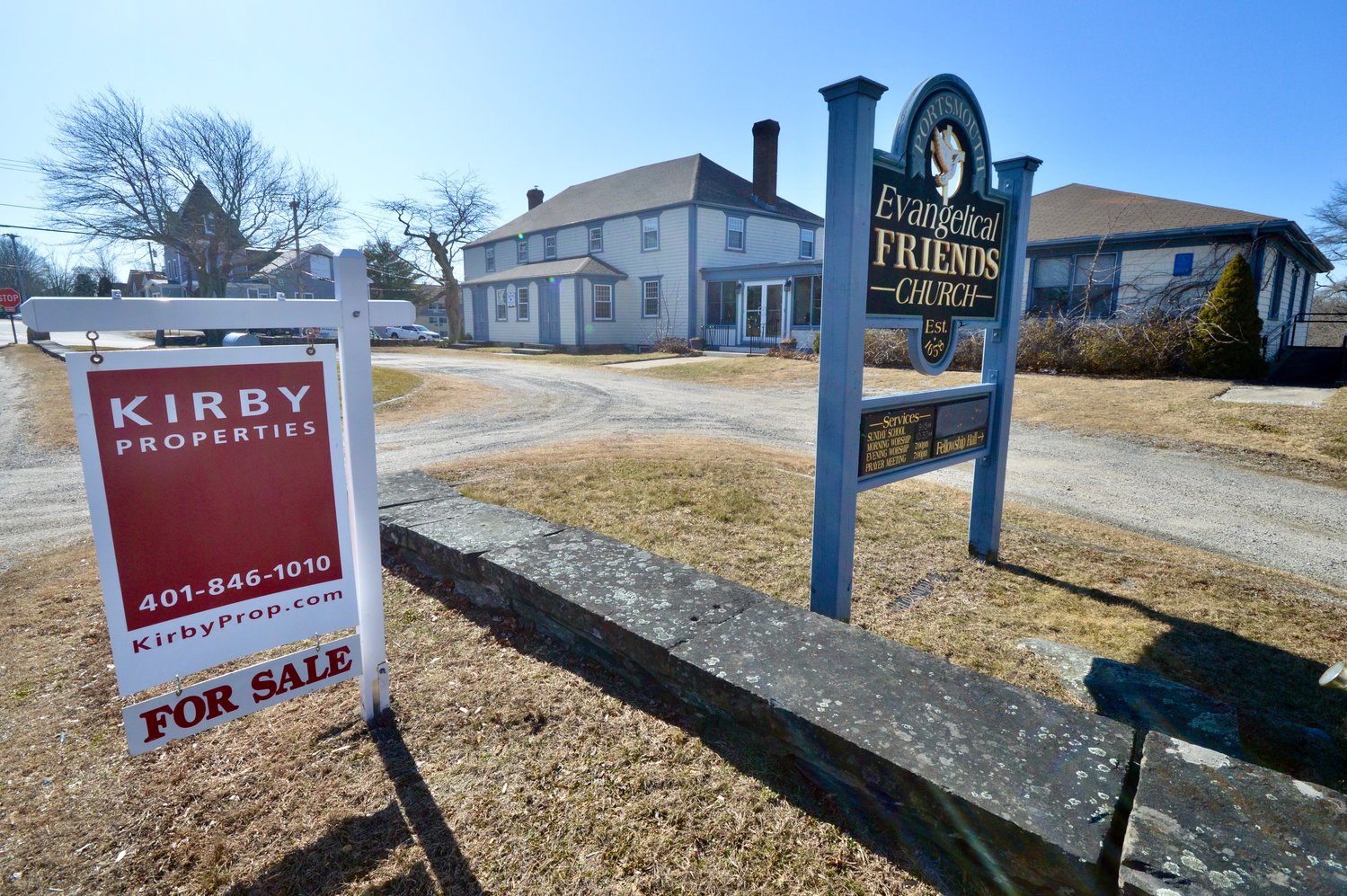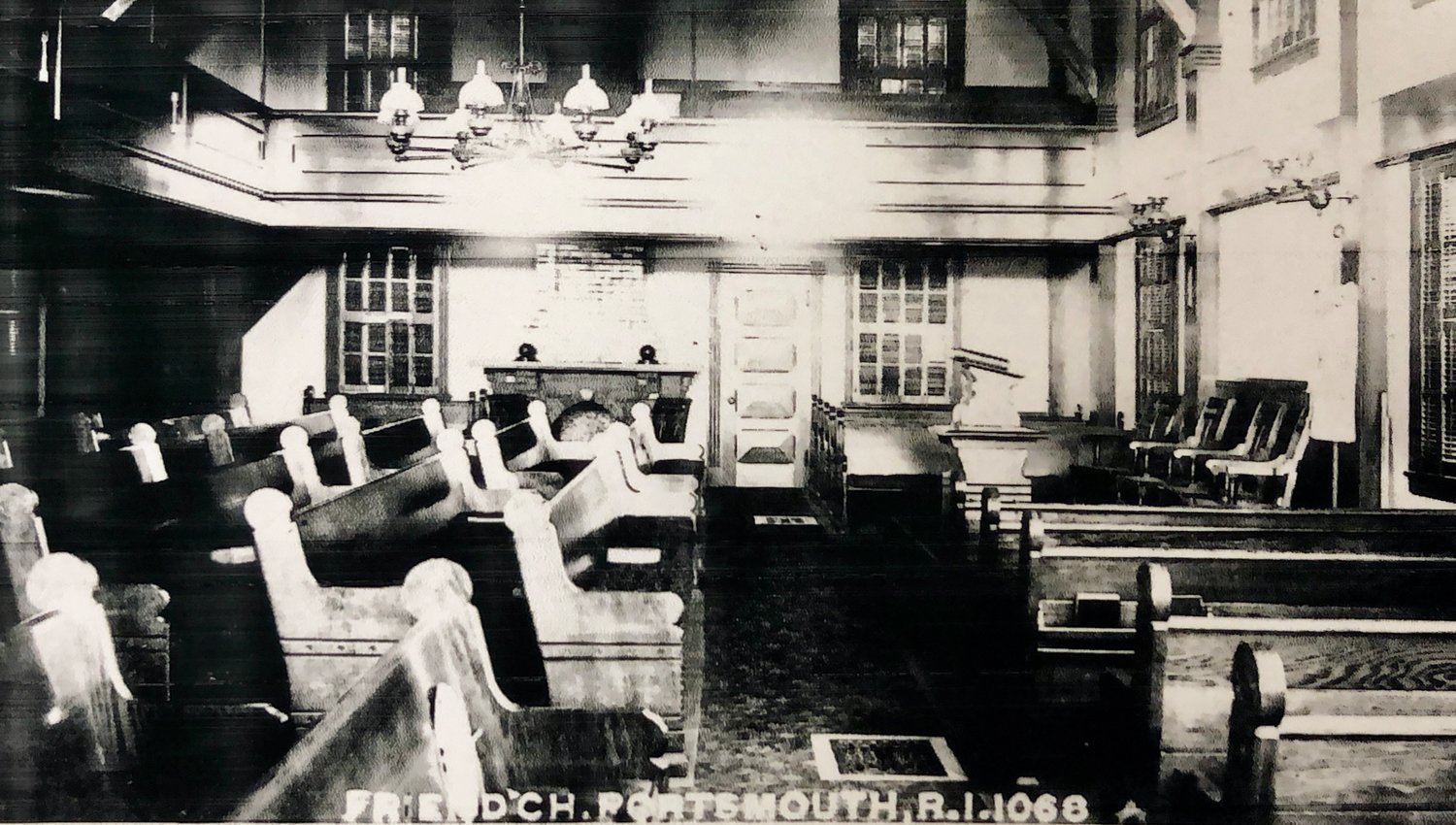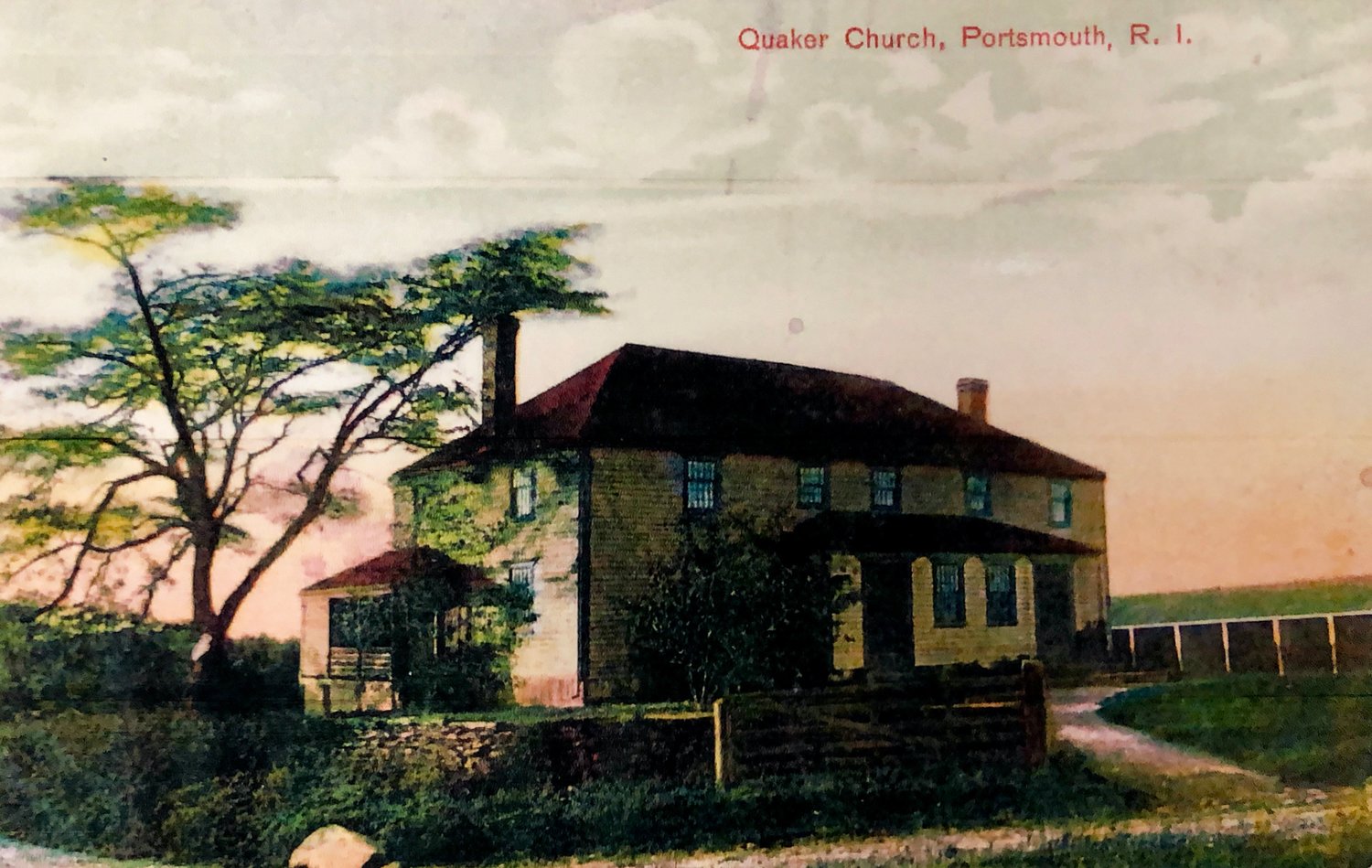History for sale in Portsmouth
Portsmouth Historical Society is pushing to save the iconic Friends Meeting House, which is on the market
PORTSMOUTH — Rick Lauder said it’s a real shame.
“It kills me to see the church closed and I drive past every day and see the weeds growing,” said the …
This item is available in full to subscribers.
Please log in to continue |
Register to post eventsIf you'd like to post an event to our calendar, you can create a free account by clicking here. Note that free accounts do not have access to our subscriber-only content. |
Day pass subscribers
Are you a day pass subscriber who needs to log in? Click here to continue.
History for sale in Portsmouth
Portsmouth Historical Society is pushing to save the iconic Friends Meeting House, which is on the market
PORTSMOUTH — Rick Lauder said it’s a real shame.
“It kills me to see the church closed and I drive past every day and see the weeds growing,” said the 72-year-old former minister of The Portsmouth Friends Meeting House, which dates from 1700 and was closed in January 2017.
Now the former Quaker church and its three-bedroom parsonage on 3.75 acres of land is for sale — the asking price is $925,000 — and Mr. Lauder and others are worried about the historic property’s future. The Portsmouth Historical Society is leading efforts to bring more awareness to the building’s historical significance to the town, and is advocating to somehow save it from becoming a housing development or a store.
Members are urging residents to attend an open house the Society has coordinated with Kirby Realtors from 10 a.m. to noon this Saturday, March 7, at the building, which sits at the top of Quaker Hill on Middle Road, near Town Hall and the School Administration Building. Town Historian Jim Garman, who’s also a member of the Society’s board of directors, will share history about the property at 11 a.m.
“We have to be an advocate for something like this,” said Craig Clark, the Society’s vice president. “We’re talking about town history. Every day I drive up Quaker Hill on my way to work and that’s what I see. It would kill me to see some ugly sign out there. That’s like a little town square.”
Mr. Clark said anyone who views the list of the people buried in the historic cemetery behind the meeting house will notice a lot of familiar names.
“It’s a roadmap — all the street names are there,” he said.
Long history
That’s no surprise, since the property is deeply engrained in Portsmouth’s history, according to Mr. Garman. In fact, the 320-year-old meeting house is probably the oldest public building in town, he said. Only a couple of other private homes, which include remnants from the 1600s, date further back, he said.
The English dissenter George Fox, who was a founder of the Religious Society of Friends, commonly known as the Quakers or Friends, spoke in Portsmouth and Newport in 1672.
“He was on a tour of the country and recruited a lot of people,” he said. “In 1690, approximately 50 percent of the people in the colony of Rhode Island were Quakers, including the governor and a few other people. William Coddington, the founder of Portsmouth as far as I’m concerned, became a Quaker and later became governor.”
In Portsmouth, the Friends first met at several different houses before purchasing the property off Hedly Street in 1699 for a meeting house, which was completed the following year. Mr. Garman believes it’s the third-oldest Friends meeting house in the country, having opened several months after one in Newport, which was established in 1699.
The congregation continued to grow until all the important people in Portsmouth were Quakers. “It thrived and was there forever,” Mr. Garman said.
The British army occupied the hilltop during the Revolutionary War and used the building as a barracks at one point, Mr. Garman said.
“There are a couple of cannonballs there that they found back in the ‘60s, when they were renovating it,” Mr. Lauder said, adding they were still there when he left three years ago.
Moses Brown was founded at the church in 1784 for a few years before it closed and then re-opened in Providence about 20 years later, Mr. Garman said.
The building was modernized and a parsonage added in the 1880s. “The inside is very Victorian — beautiful wood and well-restored,” Mr. Garman said.
A nursery school operated in the basement of the church for about 20 years starting in the early ‘70s, and years later a wing was added for fellowship meals, meetings and restrooms.
Closed in 2017
The congregation came to an abrupt end in January 2017, however, when the Society of Friends Eastern Region in Canton, Ohio, ordered it shut down.
“It was closed because headquarters felt it didn’t have enough members and it wasn’t a megachurch like the ones in Ohio,” said Mr. Lauder, a former chairman of the School Committee who had been a member of the congregation since 1973 and raised his children in the parsonage. ”They told the congregation they were changing the locks. I haven’t been in the building in three years.”
In the three years before it closed, Mr. Lauder said he and others had completed many improvements on the building, including the addition of a new roof, new plywood, new paint, two new furnaces, town water and more.
Mr. Garman said while the church is in “pretty good shape,” the parsonage is a mess. “They started to re-do it. They wanted to put a bathroom in downstairs, so they took it all apart. Ohio came along and said, ‘You’re out,’ so it’s still all apart,” he said.
What will become of it?
Although the property was added to the National Register of Historic Places in 1973, that designation gives it no protection from sale or redevelopment, Mr. Garman said. That’s why the historical society stepped in, although no one’s quite sure what to do with the building even if they find a way to save it.
“We just felt that as a historical society, it was necessary for us to take a stand,” said Mr. Clark. “This is our history; we have to preserve it in some form or fashion. You hear stories of people saying, ‘Oh, I can tear that down and put in 22 housing units.’ You hear these things, and you don’t know how true they are, but it’s scary.”
He said it’s important that the town get involved. “It’s right there,” Mr. Clark said, pointing to the close proximity of the building to Town Hall. “It just makes sense for them to be involved. Plus, if they’re going in one direction with it, we don’t want to be fighting with them, either.”
Town Administrator Richard Rainer, Jr. said he understands there’s great interest in preserving the building, but it may be difficult for the town to acquire it.
“My only caution to the council would be, it is an old building,” Mr. Rainer said. “I talked to the fire marshal and asked him, ‘Let’s say the town bought it. What would happen?’ He said, ‘The first thing I’d do is, I can’t let anyone use the building. There are no sprinklers.’”
For the town to acquire the building, he said, “it would have to be at a substantially reduced cost, because we’d have to do some significant changes.”
The town is exploring the matter, however, and plans to have representation at the open house on Saturday, Mr. Rainer said.
Money to save the property could come from private donations, grants, perhaps corporate sponsorships, Mr. Clark said. “And also, there are a lot of groups in town that are spending $2,000 a month or whatever on meeting space. There’s money being spent that could be put toward a mortgage or something.”
According to Mr. Garman, if the Society somehow acquired the property, it would lease it back to the local Friends to re-start the congregation and also rent it out to other nonprofits.
The Society could also use it for archival storage because unlike its museum on East Main Road at Union Street, it has heat, he said. The idea of a visitors’ center has also been floated.
“That’s the big question that we really don’t have the answer for: If we get it, what would we do with it? We don’t really know,” Mr. Garman said.
Preserving history
Paul Kochis, the Society’s corresponding secretary, said something needs to be done before another piece of Portsmouth’s rich history is gone for good.
“This community was really founded by Quakers and inhabited by Quakers in the beginning. That building opened in 1700. You’re talking about three centuries of our heritage connected to that,” he said.
Mr. Lauder said he wants two things to happen: “I’d like to see the historical value of the church be preserved, because it is very unique, and I think the Portsmouth Historical Society is best-equipped to do that. The other thing I’d like to see is a certain performing of religion continue on in the building. It has museum value and it also has religious value,” he said.
Added Mr. Clark, “If you don’t take a stand on what’s important, you’re going to lose what you have.”













